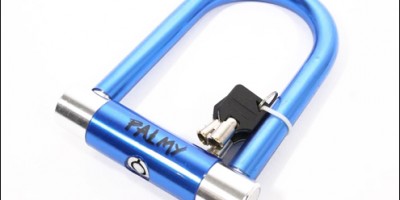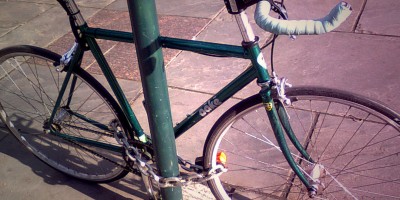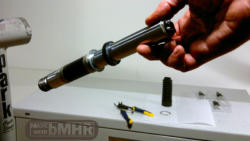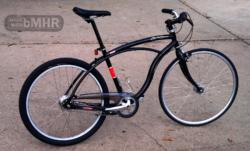It is possible to retain ownership of a bicycle in the big city, even in New York. Here bike theft is unbelievably bold and common, but with a little care, you can keep a bike.
Most bike theft is quick, jump out of the van, pry that long kryptonite with a big bar, jump back in; or walk around with big bolt cutters under the coat, find a bike locked with a cable, and snip.
The common denominator is time. How much time do you need to leave your bike unattended, and how much time does a thief need to take something.
(Keeping a totally outdoor bike is a different project, I will write about that in another post. Here I discuss the situation where a rider has overnight indoor storage. Just temporarily locking up outside a store or restaurant requires knowledge and equipment.)
1) Protect from parts stripping
- Locking skewers
- Seat post bolt
- Lock wheels separately
2) Lock down the bike
- Two giant different locks
- Hardened chain with proper lock
- Correct use of mini U-lock
First, protect from parts stripping, eliminate those quick release skewers. Most stripping is merely convenience theft. If taking wheels or a seat needs no tools, even normal people are tempted. At the wheels, replace the levers with special security skewers, often called locking skewers. At the seatpost, put in a normal binder bolt and keep it tight.
There are several security skewer designs, and more being invented. From least to most expensive: At the most basic, an axle with nuts will give you a few minutes of security, requiring a thief to have a pair of pliers. One up from the bottom are skewers which have an allen head screw, these give several more minutes of security, requiring a thief to have an allen wrench. Then there are the proprietary fasteners. The odd sized allen heads work reasonably well. And the triangle head of the Hublox brand works, but it is weak and could be smashed by a determined thief. The Kryptonite/Pinhead/OnGuard skewers with the 3 holed nuts are very effective, these will give you many hours of security. The Pitlock brand, with the special socket, is also super effective but expensive; primarily available only in Europe.
BTW None of these work on old forks with smooth flat dropouts.
There are other half assed methods, including putting a hose clamp, duct tape, or a pad lock over the quick release lever. Come on, these are sloppy and ineffective; giving only a few extra minutes of safety.
Locking skewers are also available for the seatpost bolt. However, these are hard to torque and stolen seatposts are usually just twisted right out of a frame. A normal seatpost bolt, kept tight, will give many hours of security.
You can find an appropriately sized stainless steel allen screw and nut in an ordinary hardware store, or get a perfect one from a bike shop.
For very high saddle security, the bicycle drive chain attached to the seat rail and bike frame method gives days of security. However, it is heavy and flops around when you ride.
For more stripping protection, I recommend securing your fork. I rigged a system using a 3 holed nut from my Pinhead skewer set to hold down the top cap of my headset. This secures the whole fork/stem front end. I now see that this system is manufactured and available for purchase.
Now if you ride a racing bike and need to have quick release wheels for whatever reason, then you have to take off that front one and lock it with the rest of the bike.
Eliminating quick releases should take care of most stripping. However, the priority is to prevent the entire bike from getting stolen.
Best method: two different gigantic locks,
second best: heavy ass hardened square link chain with the proper tiny u-lock.
The most usable method: a mini u-lock, (best place: rear wheel inside the frame triangle. )
Two different locks require different tools and more time.

U-locks with a fat locking mechanism are just heavy - not effective. It is the loop which is cut or broken.

These aluminum U-locks are cuttable but require tools and time. These locks are usefull because they are very light and secure enough for short term locking.
Unfortunately all locks are fallible. Specifically, they can all be cut with a handheld grinder. The big chains, when used with the proper lock, can only be defeated with this ultimate method, luckily this takes much time and is very noisy. Thieves rarely use this.
The long shackle u-locks can be pried open, they can be twisted, and a small car jack can fit inside to jack them open. The compactness of the mini u-lock resists these attacks. Additionally, they are less expensive, lighter weight, and can be carried in a pocket.
bad locks: cable, cheap chain, pad lock

















I truly enjoy reading through on this internet site , it contains superb content .